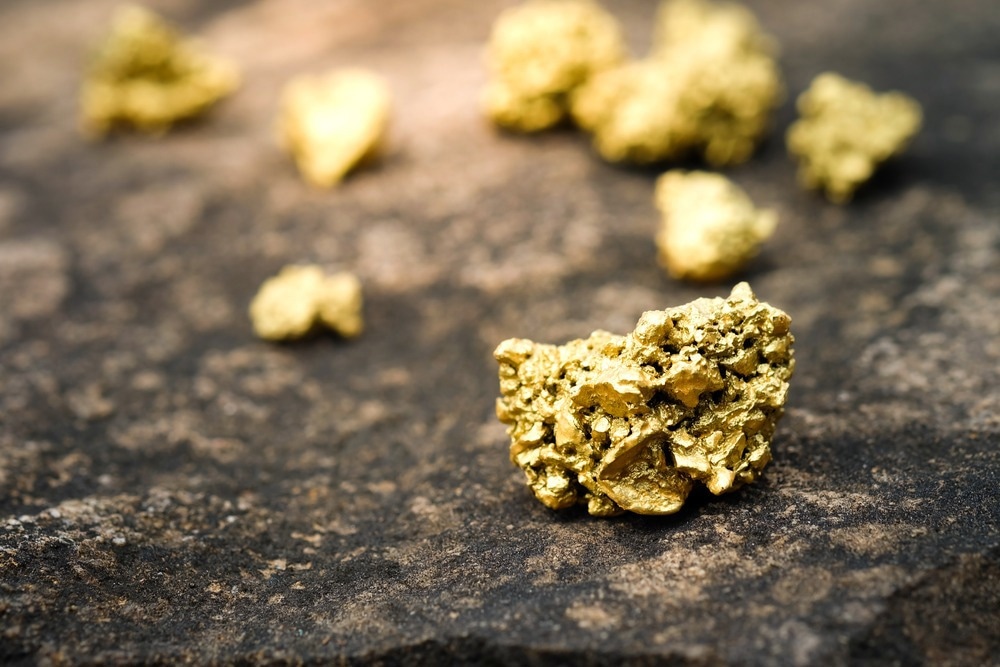In a pre-proof study from Materials, researchers have examined the effect of the electron-phonon coupling parameter's dependency on the atomic temperature in gold, palladium, and ruthenium. The reliance on atomic temperature results in nonlinear behavior, with faster electron-phonon equilibration at higher starting electronic temperature.
 Study: Effect of Atomic-Temperature Dependence of the Electron-Phonon Coupling in Two-Temperature Model. Image Credit: Phawat/Shutterstock.com
Study: Effect of Atomic-Temperature Dependence of the Electron-Phonon Coupling in Two-Temperature Model. Image Credit: Phawat/Shutterstock.com
The two-temperature model is used to explain the laser irradiation of metals theoretically. The electron-phonon coupling parameter controls the energy transfer between the atomic and excited electronic systems. The electronic temperature and the atomic temperature affect the electron-phonon interaction.
Ultrafast Laser Irradiation
Irradiation of metals requires ultrafast high-intensity laser pulses for applied and fundamental science. Ultrafast energy irradiation in the matter results in rare material properties and dynamics in the non-equilibrium stage.
It has numerous other uses, including micromachining, nanotechnology, and material processing. A series of physical events occur due to ultrafast laser irradiation, resulting in material modifications.
Non-Equilibrium Stage of Electronic System
The target's electronic system first develops a non-equilibrium distribution following photon absorption. The distribution function of the thermalizing electrons relaxes to its equilibrium Fermi-Dirac stage during this brief time. This non-equilibrium state is shorter as the electronic coupling thermalizes at femtosecond scales. Depending on the excitation level and particular material, the out-of-equilibrium condition can endure for femtoseconds to a picosecond.
The energy in the electronic system is lost by spatial diffusion away from the laser spot in the material's depth. At the same time, the electrons engage in electron-ion (or electron-phonon) scattering with the lattice. The laser pulse's energy that electrons have absorbed through this process transfers to the target's ionic system.
Phonons exhibit a non-equilibrium stage for longer periods when they receive energy from the electrons. The slackening of electrons and the energy flow determine the dynamics of laser-irradiated materials and their ultimate state after irradiation.
Electron-Phonon Coupling Parameter for Laser‐Excited Materials
The electron-phonon coupling parameter governs how thermal energy moves between electrons and phonons. The results of various theoretical calculations of this parameter for laser-excited materials revealed significant disparities.
The electron-phonon, or generally, the electron-ion coupling parameter, is a function of the exciting material's current state, which includes factors such as temperature, density, and structure. Because of this, it is challenging to compute and incorporate it into existing models intended to simulate laser-matter interaction.
Two‐Temperature Model
The two-temperature model is the most popular and commonly used model that accounts for the electron-phonon energy exchange. The two-temperature model uses a constant electron temperature-dependent coupling parameter.
Different multi-temperature techniques come from extensions of the TTM that address distinct electronic bands and phonon modes individually, each with its temperature. Such methods necessitate a much more profound comprehension of the electron-phonon coupling parameter.
In addition to theoretical work, the recent advancement of experimental methods utilizing ultrafast electron and X-ray diffraction allows for the exploration of transient states of laser-excited materials with unheard-of spatial and temporal resolution.
Using suitable theoretical models, such techniques enable the extraction of the electron-phonon coupling parameter as a function of the irradiation circumstances. Such experimental advancements encourage additional research on the electron-phonon coupling parameter, one of the least understood characteristics of laser-irradiated materials.
Dependence of the Coupling Parameter on the Atomic Temperature
Akhmetov et al. expanded the tight-binding (TB) molecular dynamics (MD) technique to concentrate on the coupling parameter's relationship to atomic temperature. The researchers used simple TTM calculations for the elemental metals ruthenium, palladium, and gold to show that such dependence was often overlooked in earlier investigations. The dependence of the coupling parameter on atomic temperature is important at large irradiation doses.
Two distinct parametrizations of the TB component calculate the coupling parameter. Using information from optical pump-probe thermo-reflectance measurements, the researchers evaluated various calculated coupling parameters on ruthenium and derived some qualitative findings.
Research Findings
Akhmetov et al. presented the predicted electron-phonon coupling parameters in Ru, Pd, and Au as a function of electronic and atomic temperatures. They showed that the atomic temperature-dependent coupling significantly affects the electron-phonon relaxation time for equilibrium at intermediate and high absorbed doses for all materials considered.
For accurate simulations, it is crucial to consider the coupling parameter's dependency on the atomic temperature. The electron-phonon coupling in Au and Ru computed with two different transferable tight-binding parametrizations is also contrasted.
The researchers discovered that choice of parametrization in Au has a significant impact on electron temperatures below 15 K. This finding has significance for the interpretation of ultrafast laser-matter interaction experiments.
The analysis of transient thermo-reflectance from Ru thin films using various electron-phonon coupling parametrizations has shown that calculations, depending on atomic temperature, show excellent agreement with the existing experimental results. This highlights the importance of calculating the coupling parameter depending on atomic temperature.
Reference
Akhmetov, F., Medvedev, N., Makhotkin, I., Ackermann, M., & Milov, I. (2022). Effect of Atomic-Temperature Dependence of the Electron-Phonon Coupling in Two-Temperature Model. Materials, 15(15), 5193. https://www.mdpi.com/1996-1944/15/15/5193
Disclaimer: The views expressed here are those of the author expressed in their private capacity and do not necessarily represent the views of AZoM.com Limited T/A AZoNetwork the owner and operator of this website. This disclaimer forms part of the Terms and conditions of use of this website.